850 Search Results for access
December 17, 2014
by Carole Zangari -
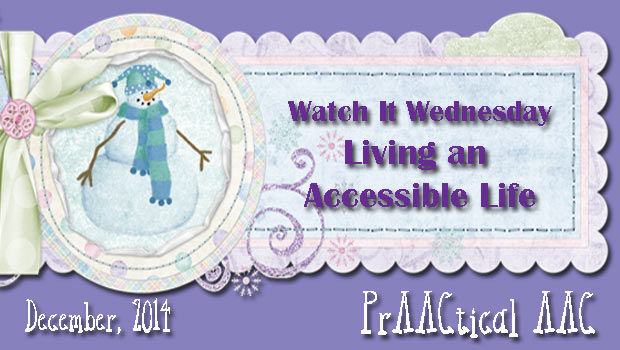
Today we’re pleased to share this video, a project of the North Carolina AT Program. Let’s peek in at Kayla, Logan, Bryan, and others share ways in which AT helps them live their best lives. Direct Link to Video: https://vimeo.com/110355711
July 14, 2014
by Carole Zangari -
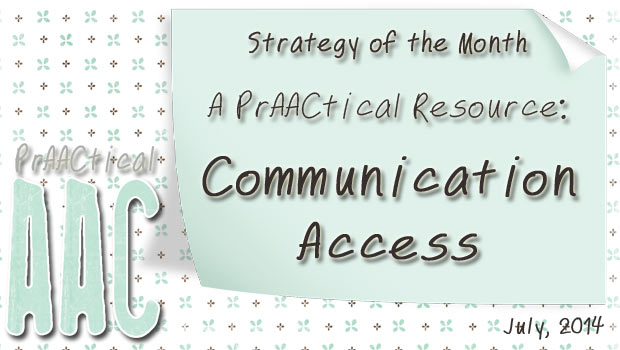
There are some organizations and projects that just amaze us with the work that they do. Today, we are looking at one of those, Communication Disabilities Access Canada, led by Barbara Collier. They have a wonderful array of resources that address important topics related to safety, self-determination, advocacy, and more. Here are two of our favorites. Communication Boards Making and Using Communication Access Cards You can follow them on Facebook, too.
June 29, 2014
by Carole Zangari -
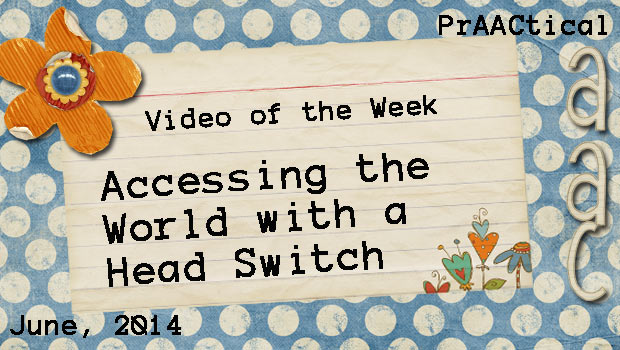
Nothing makes us smile like learning about AAC-related content from people who use technology to communicate their message to the world. In this post, we hear about and from film maker Christopher Hill. Take a peek at his presentation at the ILT 2014 conference. Direct Link to Video: https://www.youtube.com/watch?v=jFieqM09nSQ#t=510l
April 30, 2014
by Carole Zangari -
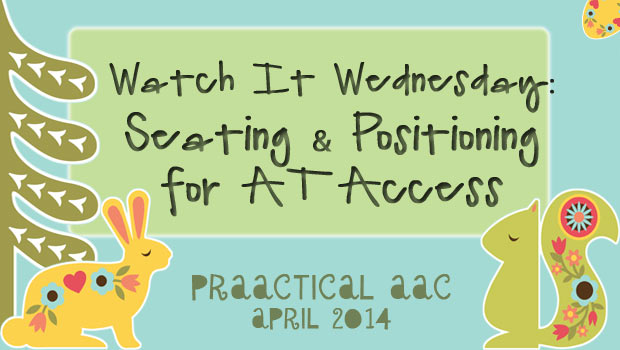
We take so many things for granted. Turning on a laptop. Reaching across a desk. Standing up to turn on the lights. When bodies work well, things like this seem to happen without us even thinking about them. But when someone has a movement disorder, little things can make a big difference. In this video, we hear from OT Aileen Costigan who teaches us the basics of seating and positioning for AT access. Thanks to the AAC-RERC for making this available on their website.
February 25, 2014
by Carole Zangari -
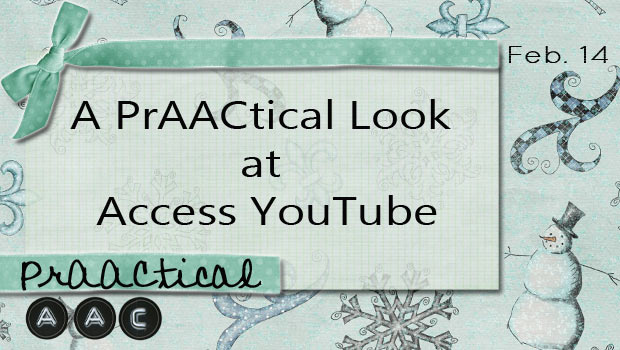
As we all know, there are many prAACtical ways to use YouTube videos to support AAC learning. When we’re looking to extend the learning outside of therapy, we sometimes use it to watch videos that demonstrate or further explain a target concept, like scarcity. Navigating YouTube can be a challenge for individuals with intellectual or physical difficulties. We can use Access Tube to make that a bit easier. The simplified layout and clear buttons make searching and playing YouTube videos easy. You can also access it with switches and touch screens. You can try it out by clicking on the image below.
February 7, 2014
by Carole Zangari -
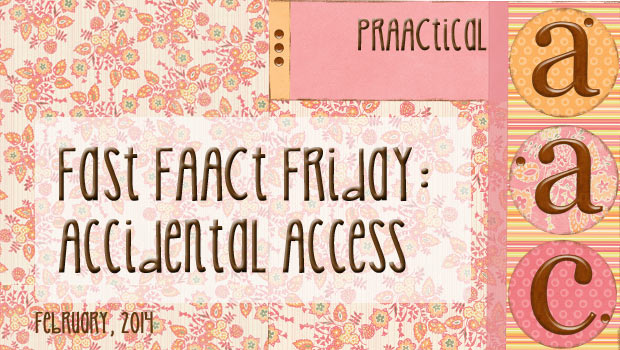
What was the first technology that allowed teachers and SLPs to use personal computers in their work with students who had significant physical disabilities? Probably the Adaptive Firmware Card (AFC). Developer Paul Schwejda and SLP Judy McDonald discuss in this wonderful video from the AT Oral History Project at the University of Connecticut. How interesting that this wonderful tool stemmed from an accidental meeting by two forward-thinking people! Direct Link to Video: http://youtu.be/xu40fnC94Hk
February 2, 2014
by Carole Zangari -
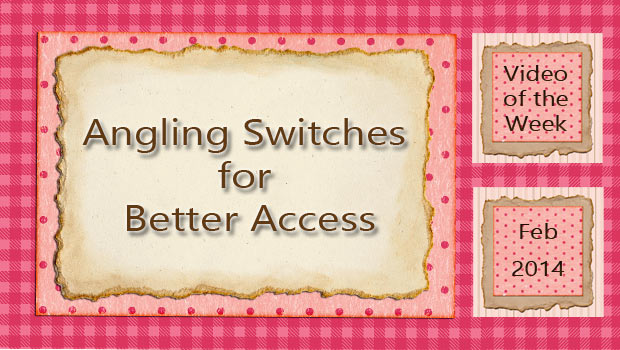
Having great AAC technology is not much help if the client can’t access it, but sometimes big access issues can be solved with little tweaks. In this video, Sue Russell, from the Boston Children’s Augmentative Communication Program, gives us some ideas for easy-to-make switch mounts. Direct link to video: http://youtu.be/yEsYacnzjNY
December 13, 2013
by Carole Zangari -
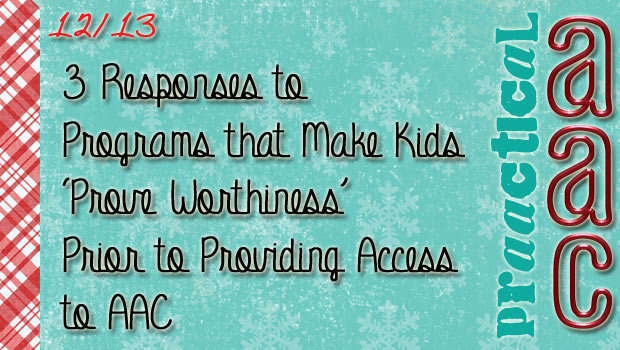
Like many of you, we continue to hear about programs that withhold AAC supports from children who are nonverbal or minimally verbal. Sometimes they point to the perceived lack of readiness that the child has for AAC, in general. Other times, they erect barriers, such as an artificial benchmark that insists that children start with no-tech AAC (e.g., communication boards, books, PECS) or low tech SGDs before ‘earning the right’ to sophisticated AAC options. As yet another year comes to a close, it is hard to believe that there are still programs, administrators, or, worse yet, our SLP colleagues who think they are truly justified in limiting access to AAC. How can we move beyond tearing our hair out, drinking excessively, or ranting to our friends? Here are some ideas. “Show me the evidence.” Ask for empirical support for the position that withholding access to AAC tools and strategies is more... [Read More...]
September 29, 2013
by Carole Zangari -
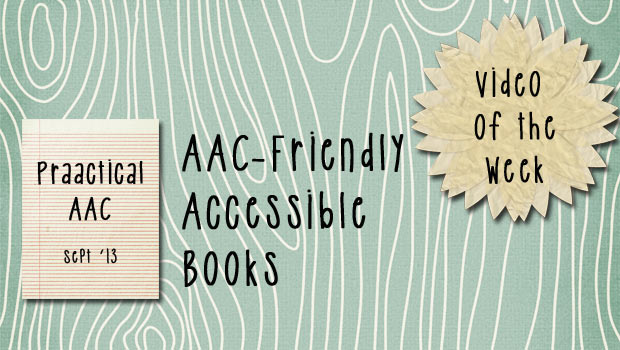
What’s an accessible book? SET BC shows us one type in this video. Check it out and then click here to download some to enjoy with an AAC learner. It’s a great day for reading! Once on the page, scroll down to access the video.
July 17, 2013
by Carole Zangari -
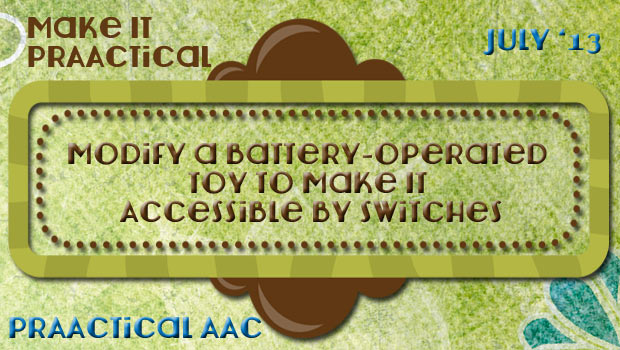
Professionals of a certain age (ahem) may remember when the only switch-accessible toys we had to work with were the ones we adapted ourselves. Now, of course, there are a wide range of battery-operated toys that are already switch-accessible and we can buy as many as the budget will allow. The problem is that most of us have pretty limited resources for purchasing these toys, and a quick search yielded adapted toys in a wide price range ($45.00-$250.00 USD). Buying regular (non-adapted) battery-operated toys and then adapting them yourself is another option. This video explains the principles. “Me?? Adapt a toy for switches?! But I’m not handy.” “That’s okay. You don’t have to be.” The easiest way is to use an inexpensive battery interrupter. You can purchase them in various sizes (e.g. AAA, AA, C, D) or make your own. You can learn more about battery interrupters and how to... [Read More...]









